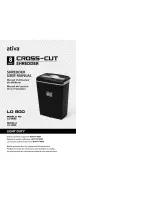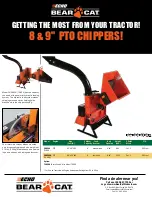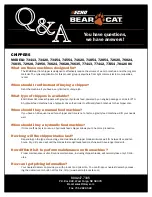
16
TIPS FOR BETTER SHREDDING
DO’s
1. Process materials at a feeding rate that allows the
rotor to keep turning at a consistently high rate of
speed.
2. Alternate wet and dry material to prevent the dis-
charge chute from becoming plugged. Dry and
moist organic material including leaves, plants, flow-
ers, fruits, and vegetables can all be shredded so
long as dry and moist materials are alternated to
help clear the shredder. Dry waste is more easily
processed than moist waste.
3. Allow wet material to dry out for a few days prior to
shredding if time permits.
If using the vacuum attachment:
4. Use the vacuum to collect light, loose, dry waste
such as leaves, grass clippings, and light shavings,
or sawdust.
Using your Chipper/Shredder
DON’Ts
1. Do not overload the shredder hopper by dumping
large volumes of material into the hopper opening. If
the engine speed slows down dramatically, you are
overloading the shredder.
2. Do not feed branches and twigs larger than 1/2” in
diameter, or longer than 18”, into the shredder.
3. Never use any object to force material into the
shredder chamber. It could get caught in the shred-
ding hammers and damage the unit, reducing shred-
der hammer effectiveness.
If using the vacuum attachment:
4. Do not overload the vacuum hose. Twigs, wet
leaves, and other bulky materials will clog the hose
and prevent shredding. The vacuum is engineered
for small, loose waste and for cleaning around deco-
rative landscaping and flower beds.
5. Avoid vacuum operation on areas where hard, non-
organic materials such as gravel, dirt clumps, or
other hard objects could get vacuumed into the
shredder chamber.
















































